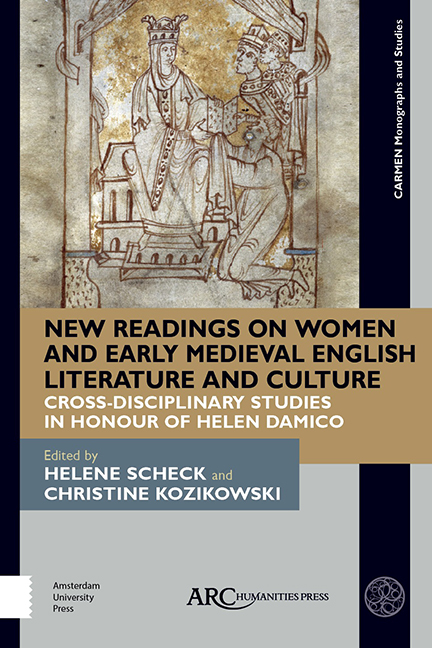 New Readings on Women and Early Medieval English Literature and Culture
New Readings on Women and Early Medieval English Literature and Culture Published online by Cambridge University Press: 20 November 2020
IN MAY 2014, a group of Anglo-Saxonists gathered at the International Congress on Medieval Studies at Kalamazoo, Michigan, for a roundtable to develop plans for a “new” version of Helen Damico and Alexandra Hennessy Olsen's pathbreaking volume, New Readings on Women in Old English Literature, which appeared nearly thirty years ago. Discussions concerning the shape and content of the proposed volume were lively, yet they produced, perhaps unsurprisingly, little consensus. Feminist scholars tend to resist univocal narratives; lack of consensus is thus a proud hallmark of feminist research. The attraction to debate and difference in feminist theory and praxis serves as an acknowledgement of how variables such as age, social status, race, ethnicity, nationality, and sexuality produce profoundly different social and psychological realities for women. Such differences help to explain the necessarily diversified and fractured nature of feminism's aims and goals. The appeal of plurality and dissent also lies in their longstanding role as catalysts for feminist knowledge production, an enterprise that has, historically, thrived on self-critique and on a willingness to think beyond its previously constructed borders. As Elizabeth Weed writes: “The critical advantage of the feminist project has been that when one area of feminism has settled on a truth, another has emerged to disrupt that truth, to keep at bay truths too easily produced by cultural and political formations.”
Perhaps the most damaging of these “too easily produced truths,” and one that feminists during the past half century have sought to disrupt, is the idea of Woman as a unitary group. Women of colour and queer feminists, in particular, have made great strides in exposing the category of Woman as a fantasy of commonality, fabricated through the repression of individual women's lived experiences, as well as a normativizing concept that naturalizes rigid sex-gender systems based on strict polarities and categorical distinctions between men and women. Questions about thoughtful plurality, multiple perspectives, and differences among women figured centrally at the Kalamazoo roundtable in 2014. They also figured centrally in the early Middle Ages.
To save this book to your Kindle, first ensure no-reply@cambridge.org is added to your Approved Personal Document E-mail List under your Personal Document Settings on the Manage Your Content and Devices page of your Amazon account. Then enter the ‘name’ part of your Kindle email address below. Find out more about saving to your Kindle.
Note you can select to save to either the @free.kindle.com or @kindle.com variations. ‘@free.kindle.com’ emails are free but can only be saved to your device when it is connected to wi-fi. ‘@kindle.com’ emails can be delivered even when you are not connected to wi-fi, but note that service fees apply.
Find out more about the Kindle Personal Document Service.
To save content items to your account, please confirm that you agree to abide by our usage policies. If this is the first time you use this feature, you will be asked to authorise Cambridge Core to connect with your account. Find out more about saving content to Dropbox.
To save content items to your account, please confirm that you agree to abide by our usage policies. If this is the first time you use this feature, you will be asked to authorise Cambridge Core to connect with your account. Find out more about saving content to Google Drive.